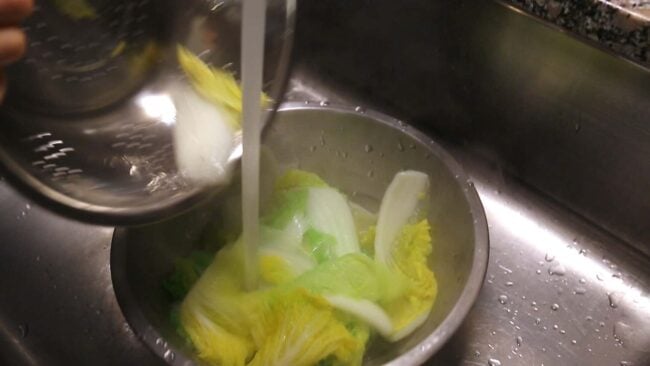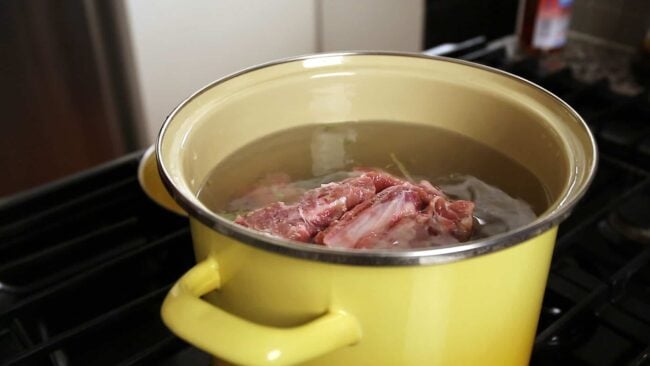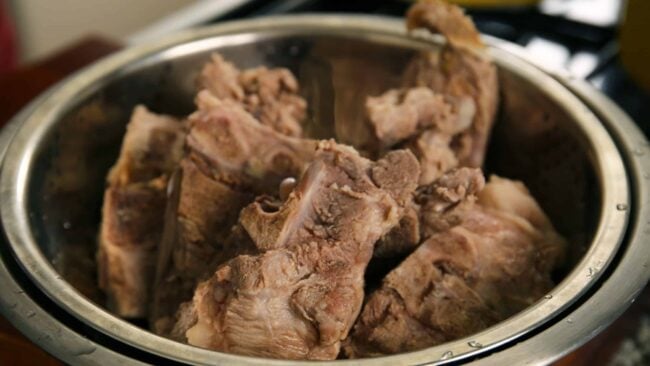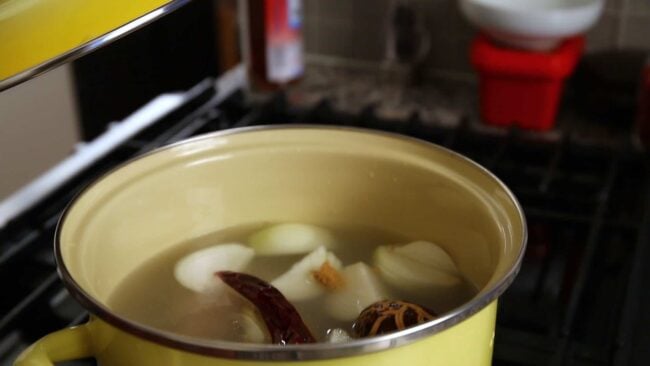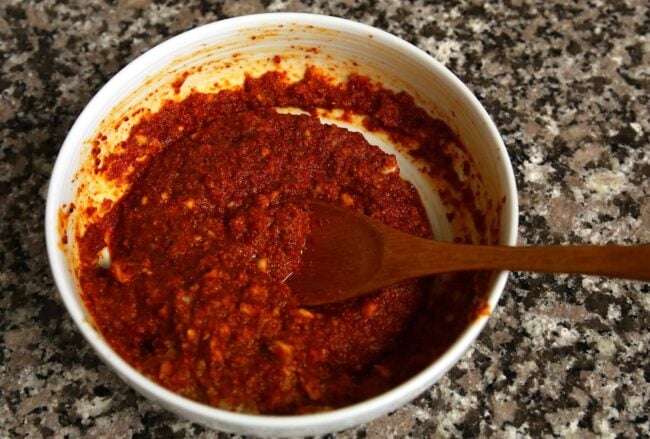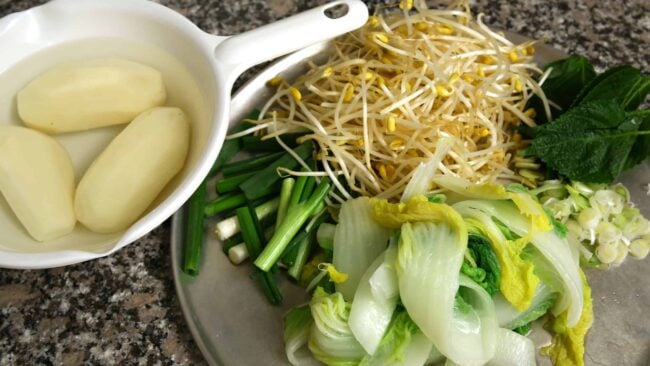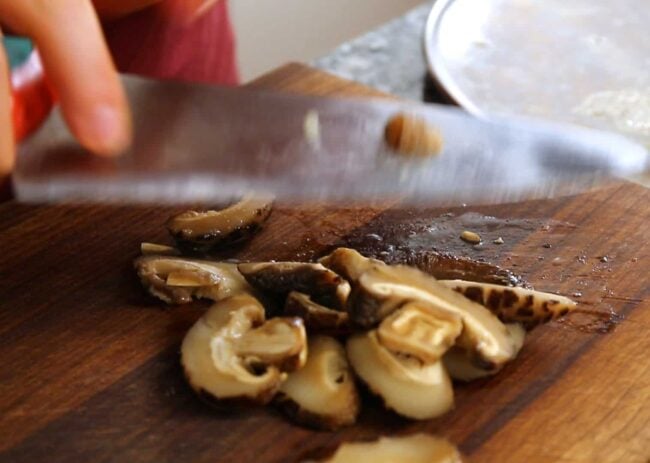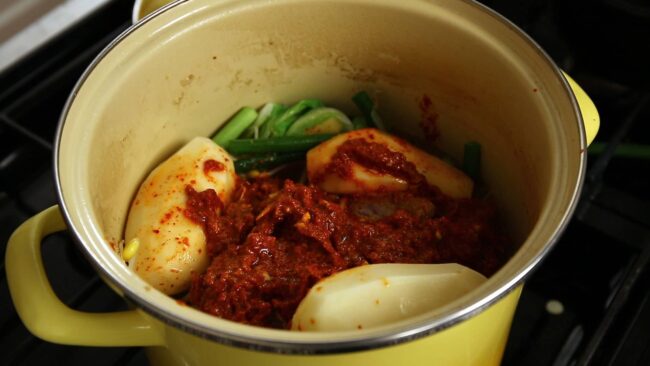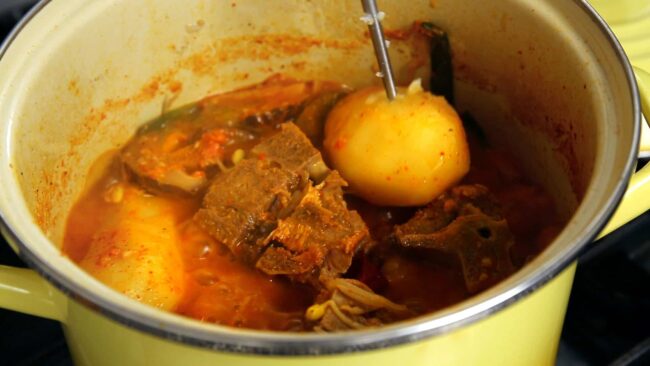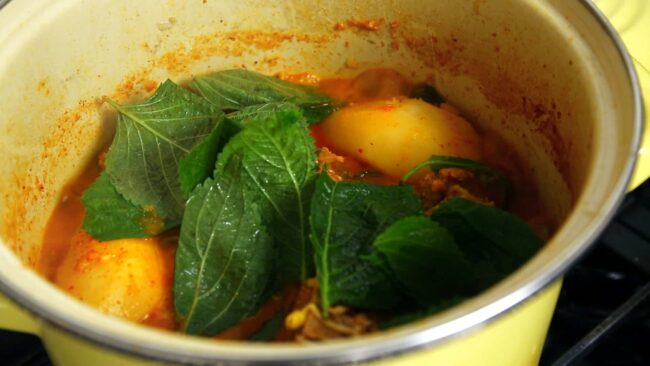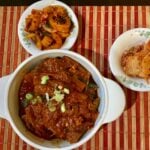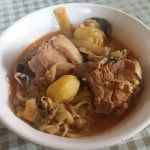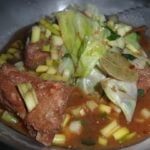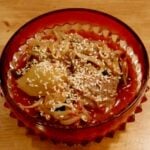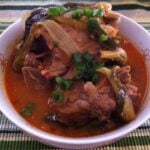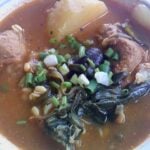Have you ever heard of gamjatang?
Gamjatang is soup made with pork neck bones and vegetables. Sizzling hot gamjatang is hearty and savory which makes it always popular at the dinner table. The soft fatty meat picked from the gaps between the bones is especially tasty. The fully cooked cabbage and bean sprouts in the stock turn soft yet retain a crispy texture. Gamjatang makes a perfect, satisfying meal when paired with a bowl of rice.
And another selling point is that the main ingredient, pork neck bones (or spine bones) is very cheap. Combined with lots of vegetables, this soup is full of nutrients.
It’s unclear how this dish got it’s name. Some of you may know that gamja in Korean is potatoes. This soup always includes a cooked potato, so is that why it’s called gamjatang? But some people say gamja refers to the delicious meat around the pork spine bones, and that’s where it got its name. It’s still controversial and no one knows the true answer.
Some of you will remember that actually I posted the recipe long time ago, in 2009! Last month I had an event with my friend Hooni Kim at his New York restaurant. He’s also the head chef there and we made dinner and collaborated on some dishes. I entertained the readers who came to the restaurant to meet me, it was wonderful to see them.
One of my readers told me she makes gamjatang from my recipe very often and she always gets compliments from her family whenever she makes it. I realized I had forgotten about my gamjatang recipe because it was posted so long ago! I said: “The video must be blurry and low quality. Can you still learn the recipe from the video?” She said: “Yes, the recipe is still good!”
When I got home that night, I went back to watch my old gamjatang video. Oh my! I could make it better now with my HD camera and more accurate measurements. It decided to remake the video with a few changes to the original recipe.
Do you want to know what’s different? I skipped buchu (asian chives) and cooking wine this time because without them, I found it still tastes so good! And I simplified some of the process when I blanch the bones. I also soak the bones only 30 minutes instead of 2 hours. What else? Yes, I added 11 cups of water instead of 10 cups of water (my old version). So I can say that my revisiting this recipe means you can make a more delicious dish in less time now. : )
Good luck with making gamjatang. I’m looking forward to meeting you someday and hearing the story about the wonderful gamjatang you made from this recipe! : )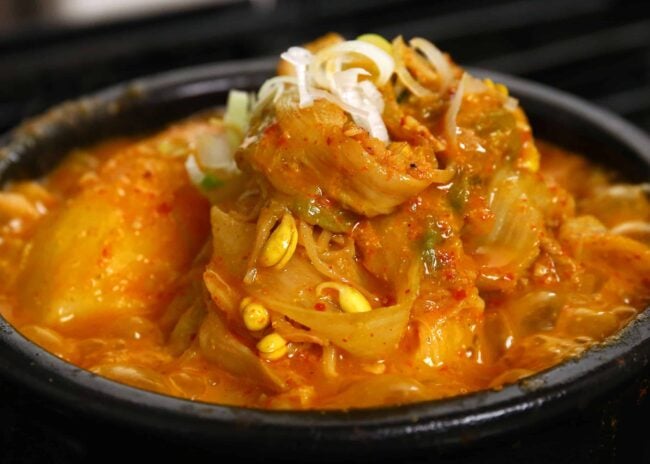
These are some tips for you if you make gamjatang tomorrow! : )
- Pork neck bones are found in the freezer section at a Korean grocery store. Try to choose bones with a lot of meat.
- My recipe is for 2 to 3 servings. If you want to make it for 4-6 servings, double the recipe and cook longer.
- Blanching and washing the bones is a very important step because it will remove the unpleasant smell from the bones and make a clear soup.
- You can replace perilla leaves with basil leaves and perilla seeds powder with sesame seeds powder.
The best perilla seeds powder to use is hulled and finely ground with a creamy color. You can also use toasted and ground, which is coarse and dark and kind of hard to swallow. Best to mix with water and strain and squeeze it, and use the water that is squeezed out in your gamjatang and discard the dregs. You can also grind whole toasted perilla seeds and then mix them with water, strain and squeeze out the milky liquid and use it. And if you can’t find any of these you can replace perilla seeds powder with sesame seeds powder.
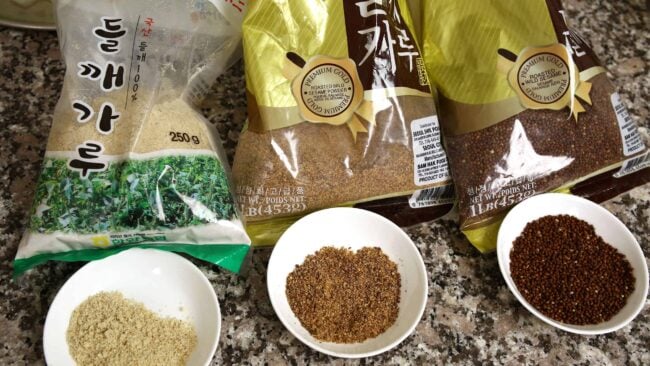 From left, skinned and ground powder, coarsely ground perilla seeds, and whole toasted perilla seeds
From left, skinned and ground powder, coarsely ground perilla seeds, and whole toasted perilla seeds
Ingredients
Makes 2-3 servings.
- 2½ to 3 pounds of pork neck bones (or spine bones)
- 1 ounce ginger, sliced
- 2 tablespoons doenjang (Korean fermented bean paste)
- 2 dried Shiitake mushrooms
- 1 medium onion, sliced
- 1 large dried red chili pepper (or a few red chili peppers)
- 1 pound of napa cabbage, cut off the core
- 2 or 3 medium potatoes, peeled
- 8 ounces soybean sprouts, washed and strained
- 4 green onions, washed and cut into 2 inch long
- 1 green onion, chopped for garnish
- 8 to 12 perilla leaves, washed
For seasoning paste:
- 6 garlic cloves, minced
- 3 tablespoons gochugaru (Korean hot pepper flakes)
- 1 tablespoon gochujang (Korean hot pepper paste)
- 3 tablespoons fish sauce
- ¼ cup deulkkae-garu (perilla seeds powder)
- ½ teaspoon ground black pepper
- ½ cup water
Directions
Cooking time: 2 hours.
Prepare the bones and broth
- Rinse the pork bones a couple of times and soak in cold water for at least 30 minutes.

- Bring a large pot of water to a boil. Blanch the cabbage for 1 minute and then take it out with tongs.
- Keep the hot water boiling, we’ll use it later for blanching pork bones.
- Rinse the cabbage in cold water and strain. Tear the leaves in lengthwise once or twice to make it long bite sized pieces.

- Put the bones into the boiling water and cover. Let them cook for 7 minutes over medium high heat. The water will turn dark and some foam will come to the surface.

- Strain the bones and wash each one in cold running water to remove any extra fat, dark foamy stuff, and bone fragments. Put the cleaned bones into a large pot.

- Add ginger, soy bean paste, dried shiitake mushrooms, onion, dried red pepper, and 11 cups of water. Cover and cook for 90 minutes over medium high heat.

While it cooks, make the seasoning paste
- Combine garlic, hot pepper flakes, hot pepper paste, fish sauce, perilla seeds powder, ground black pepper, and ¼ cup water in a bowl.
- Mix well until creamy.

Finish
- 90 minutes later, open the pot. Take out the 2 shiitake mushrooms and put them on your cutting board. Add the cabbage, soy bean sprouts, 3 green onions, and the peeled potatoes.

- Slice the mushrooms thinly and put them back to the pot. Add the seasoning paste. Add ¼ cup water and cover.


- Cook for 30 to 40 minutes over medium high heat until the potatoes are fully cooked. Test them by poking one with a chopstick or a bamboo skewer. If the chopstick goes through easily, it’s fully cooked.

- Add the perilla leaves and stir. You can serve right away with rice and a few more side dishes.

Serve
There are a few ways to serve, depending on how you like it:
- Ladle the soup into individual bowls and sprinkle each with some chopped green onion. You can also reheat the soup in earthenware bowls and then serve them to the table bubbling hot.

- Put all the soup in a large shallow pot, and sprinkle some chopped green onion over top. Put the pot in the center of the table along with the rice and some other side dishes. You can share it all together. I recommend giving out small individual bowls and a ladle so that people can put some soup in their bowl and enjoy it that way, instead of eating from the pot in the middle of the table.
Maangchi's Amazon picks for this recipe
It's always best to buy Korean items at your local Korean grocery store, but I know that's not always possible so I chose these products on Amazon that are good quality. See more about how these items were chosen.




